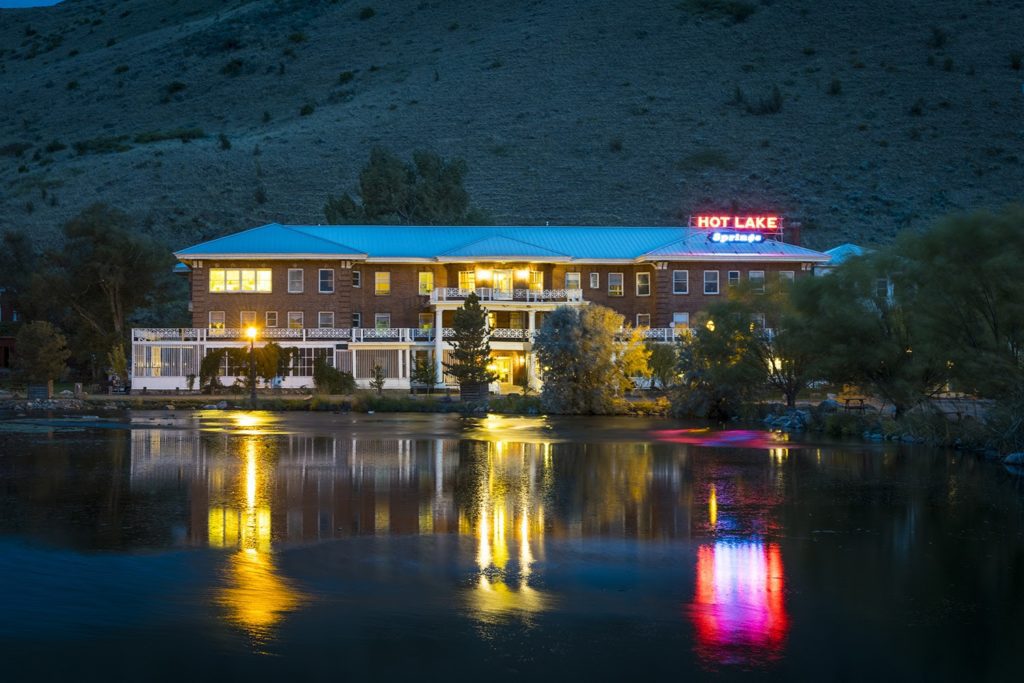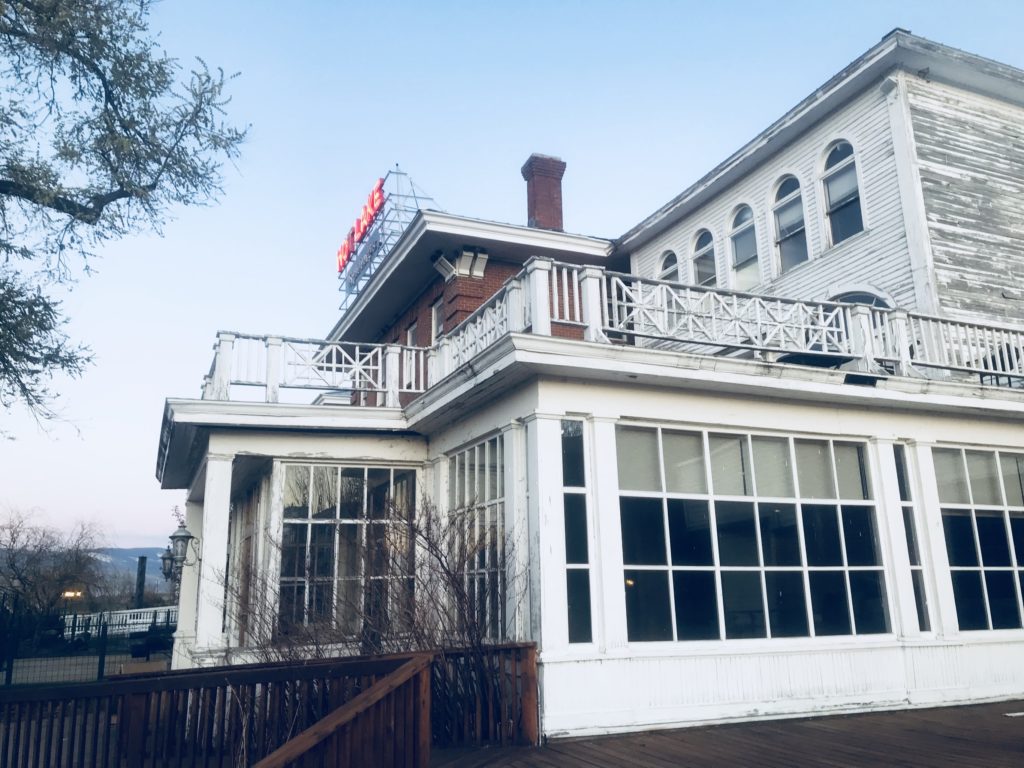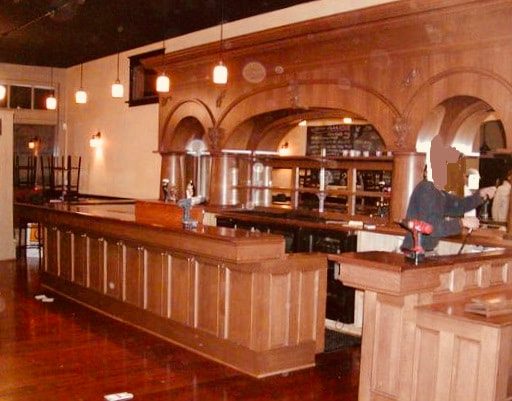About
The Lodge at Hot Lake Springs
History
The hot springs themselves rest at the foot of a large bluff, and were often used by Native Americans or it’s medicinal powers before settlement and colonization occurred in the area; the lake was named “Ea-Kesh-Pa” by the Nez Perce. Later it became a popular stop for weary travelers on the Oregon Trail.
The famous 1906 brick hotel, now under renovation, was once called the “Mayo Clinic of the West” and attracted visitors and patients from around the world.
Hot Lake’s heyday lasted into the mid 1930’s. A devistating fire in 1934 destroyed all wooden structures, but the 1906 brick building survived.
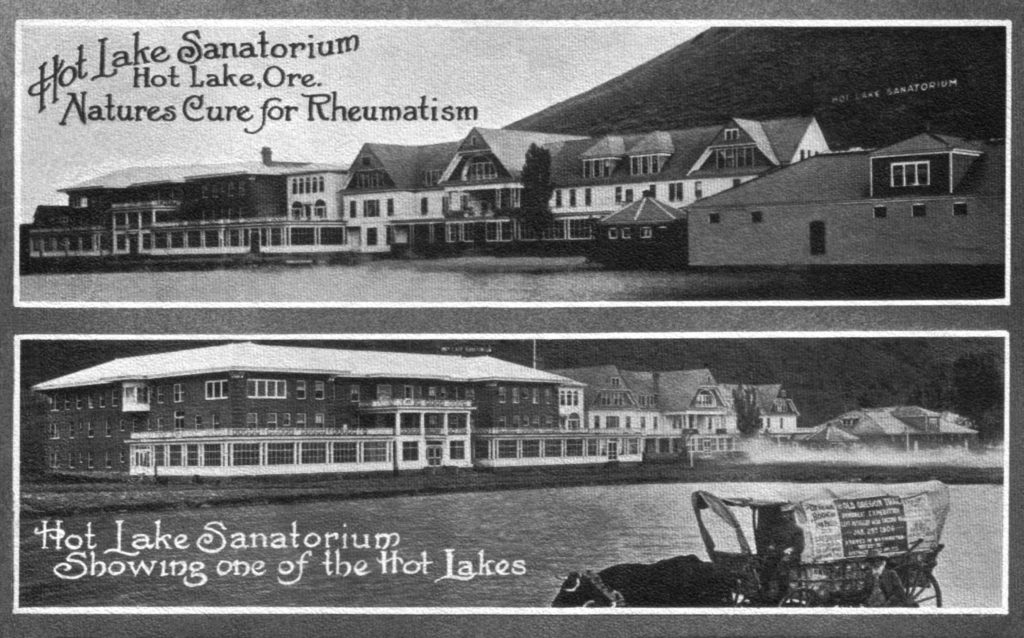
Construction and Heyday (1864-1931)
In 1864, Fitzgerald Newhard built the first wooden structure of the building, which faced toward the bluff rather than outward toward the lake. The structure was similar to the contents of a modern-day shopping mall, containing a post office, blacksmith, dance hall, barber shop, bath house, and several other businesses.
By 1884, the Union Pacific Railroad commenced its construction, running near Hot Lake. In 1903, the original wooden structure was demolished, and construction began on a new hotel and various bath houses. Dr. Phy became involved with the project in 1904, and the brick structure of the building began to be built two years later. Well-renowned architect John V. Bennes of nearby Baker City has been attributed to the architectural design of the building, reminiscent of the Colonial era; Bennes also designed countless buildings on the Oregon State University campus, as well as several buildings in Portland, Oregon. By 1908, the brick building was complete, housing just over 100 guest rooms. Soon after, the Central Railroad of Oregon built a 4-mile (6.4 km) line from Richmond directly to the hotel in 1912.
In 1917, Dr. Phy purchased the hotel and resort, renaming it “Hot Lake Sanitorium”, housing guest rooms, medical wards, offices, and a kitchen/dance hall. The building was from then on known not only as a resort for the rich, but also as a hospital for the ill; the geothermal mineral waters from the springs were used and experimented with to help treat patients and guests, making the resort a pioneering figure in western experimental medicine.
By 1924, the hotel was a major tourist attraction; countless new visitors arrived daily from all over the world. The Mayo brothers, founders of the Mayo Clinic, were frequent visitors to the hotel, as well as Wild Bill Hickok. Dr. Phy, the central manager and owner of the property, died in 1931 of pneumonia.
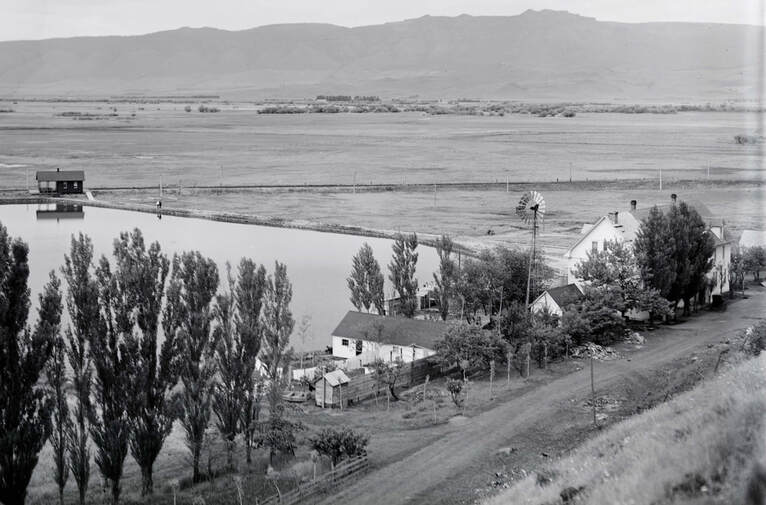
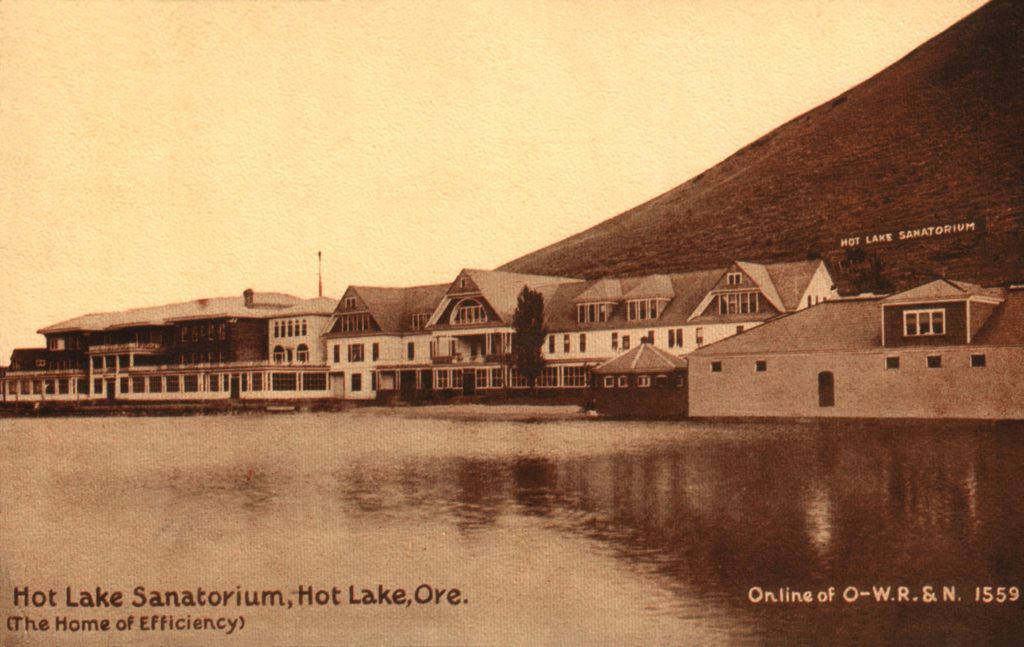
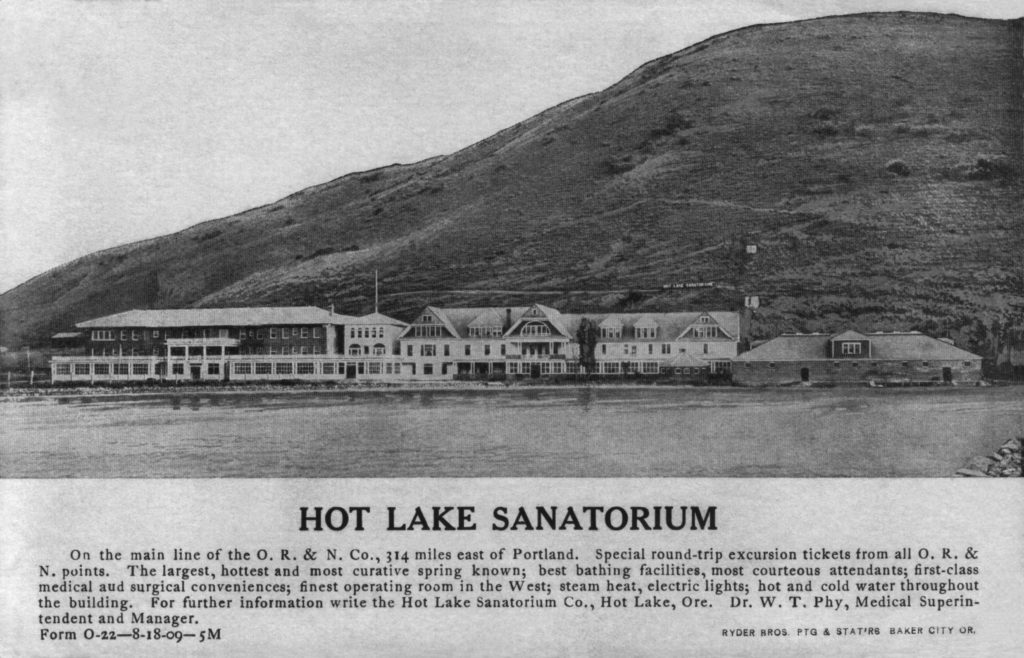
In 1864, Fitzgerald Newhard built the first wooden structure of the building, which faced toward the bluff rather than outward toward the lake. The structure was similar to the contents of a modern-day shopping mall, containing a post office, blacksmith, dance hall, barber shop, bath house, and several other businesses.
By 1884, the Union Pacific Railroad commenced its construction, running near Hot Lake. In 1903, the original wooden structure was demolished, and construction began on a new hotel and various bath houses. Dr. Phy became involved with the project in 1904, and the brick structure of the building began to be built two years later. Well-renowned architect John V. Bennes of nearby Baker City has been attributed to the architectural design of the building, reminiscent of the Colonial era; Bennes also designed countless buildings on the Oregon State University campus, as well as several buildings in Portland, Oregon. By 1908, the brick building was complete, housing just over 100 guest rooms. Soon after, the Central Railroad of Oregon built a 4-mile (6.4 km) line from Richmond directly to the hotel in 1912.
In 1917, Dr. Phy purchased the hotel and resort, renaming it “Hot Lake Sanitorium”, housing guest rooms, medical wards, offices, and a kitchen/dance hall. The building was from then on known not only as a resort for the rich, but also as a hospital for the ill; the geothermal mineral waters from the springs were used and experimented with to help treat patients and guests, making the resort a pioneering figure in western experimental medicine.
By 1924, the hotel was a major tourist attraction; countless new visitors arrived daily from all over the world. The Mayo brothers, founders of the Mayo Clinic, were frequent visitors to the hotel, as well as Wild Bill Hickok. Dr. Phy, the central manager and owner of the property, died in 1931 of pneumonia.
Fire and later years (1934-1991)
On May 7, 1934, a fire destroyed the majority of the building’s right side, completely demolishing the wooden structures of the hotel; the 65,000-square-foot (6,000 m2) brick portion of the building, however, survived. The building had contained nearly 300 rooms and dining areas for over 1,000 guests prior to the fire. From then on, business at the hotel declined, and eventually the hospital area on the third floor was the only functioning business.
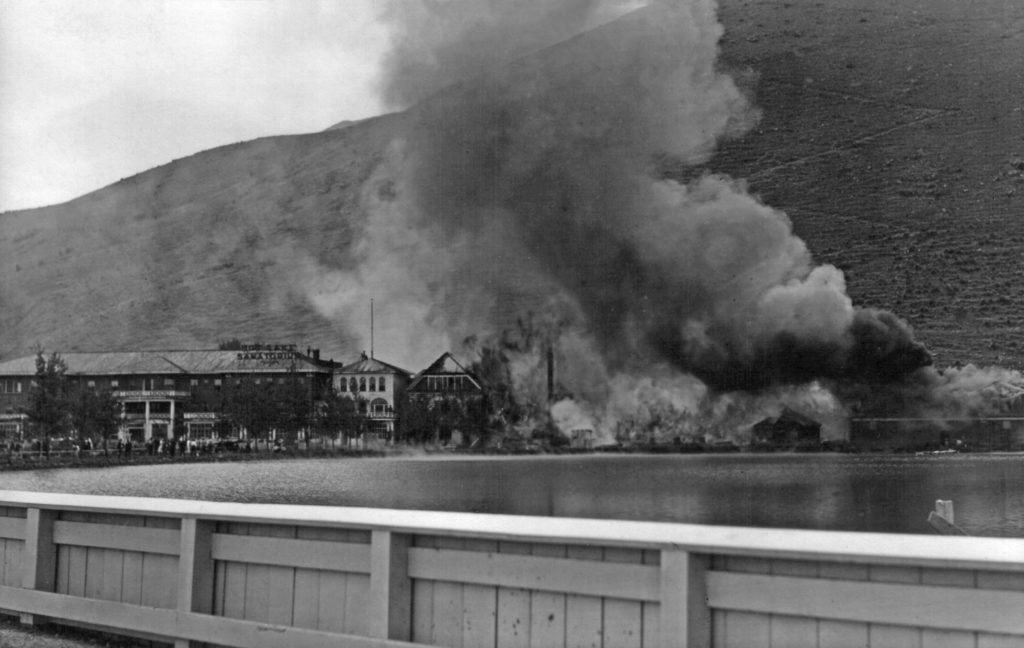
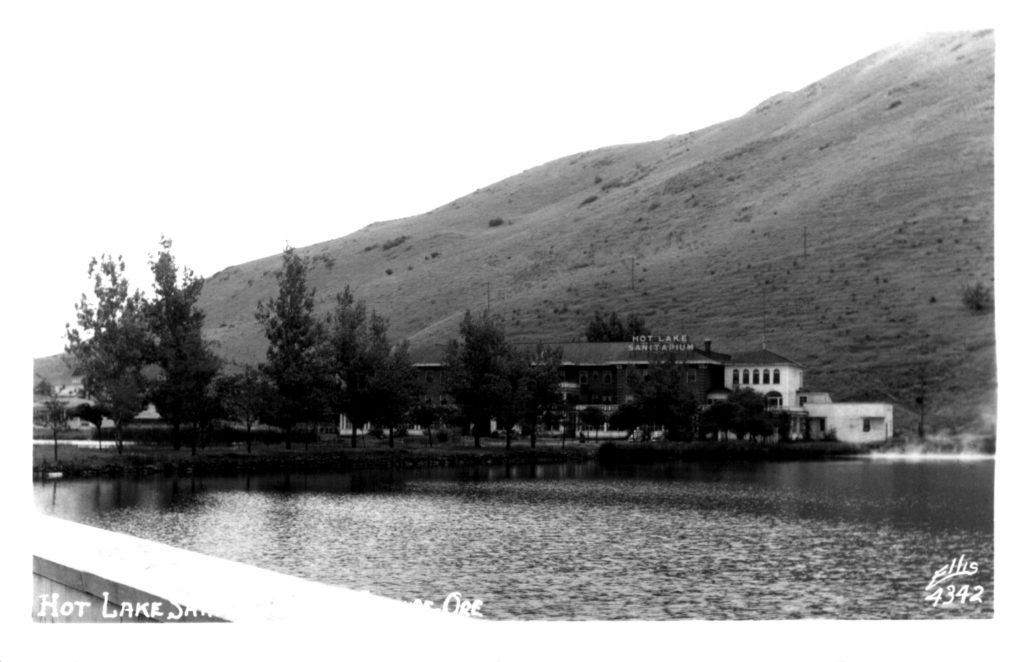
A flight school and nurse’s training center was established at the hotel during World War II, and U.S. Route 30 was later built, with Oregon Route 203 branching off of it and running right by the front of the hotel grounds. The attraction of the complex declined in later years, and its use as a resort came to a halt in 1953 when it was converted solely to a nursing home by Dr. Roth. By 1975, ownership of the building had changed, and a short-lived restaurant and night club was opened, which only ran for two years.
In the mid-1980s, Dr. Lyle Griffith purchased the property and used one corner of the hotel as a bath house; by 1991, the bath house closed down, and the hotel was abandoned, falling prey to local vandals and the elements.
Restoration by Manuel Family (2003-2019)
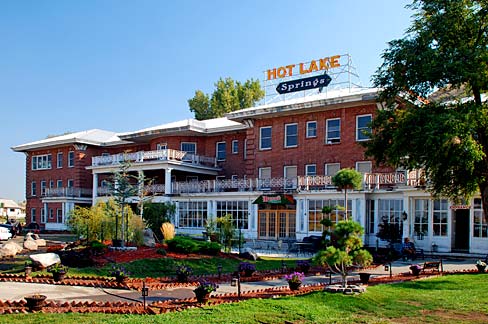
In 2003, the building, which was literally falling apart, was purchased from Charles and Louise Rhea by David Manuel. Restoration began soon after; the building was greatly dilapidated, with all 368 windows broken and/or missing, and a sparsely-remaining roof. After two years of construction, it was opened to the public for tours in 2005, while individual guest rooms were still being sponsored and renovated. In 2008, the west wing of the building collapsed. In 2010, the building functioned as a bed and breakfast, with dozens of restored rooms, a spa, restaurant, bronze foundry, and a museum. By 2019 the harsh Eastern Oregon elements had begun to undo years of hard work by the Manuel family.
The Lodge at Hot Lake Springs (2020- Present)
Make a reservation today!
